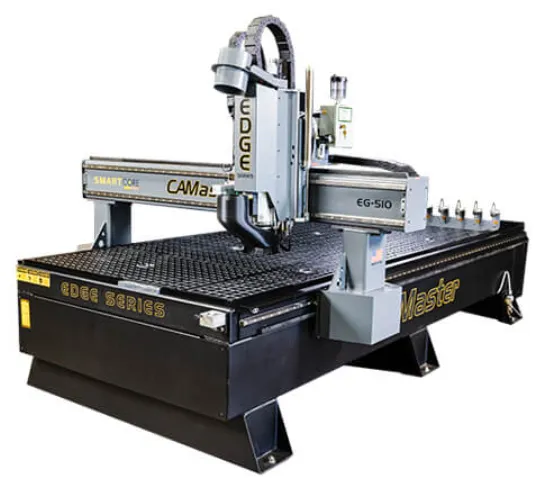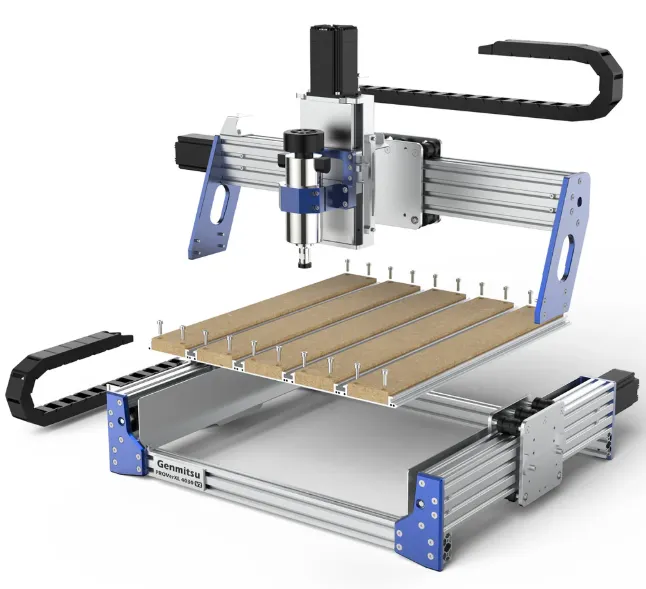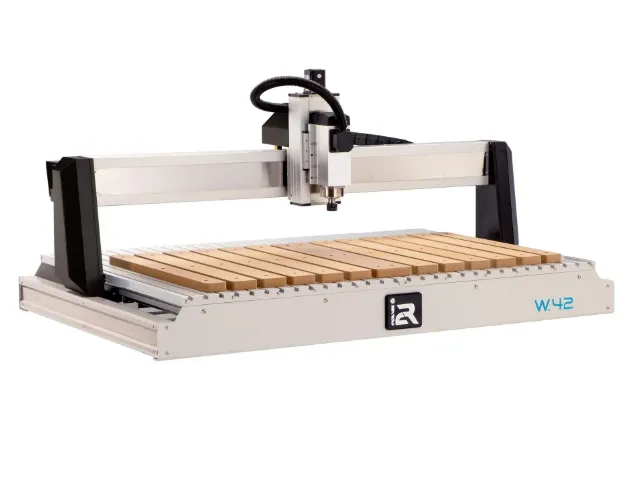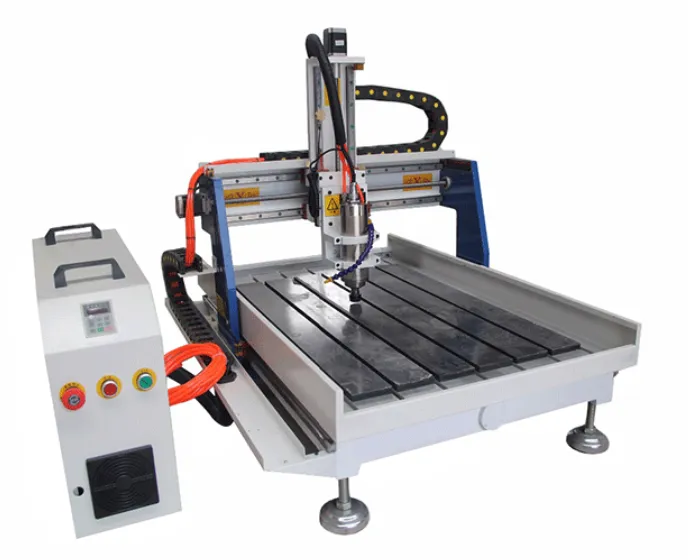The modern home CNC machine represents a significant technological advancement that brings industrial-grade fabrication capabilities into personal workshops and garages. These compact systems typically feature working envelopes ranging from 12″ x 8″ x 3″ for desktop units to 24″ x 36″ x 6″ for larger benchtop models, constructed from aluminum extrusions or steel frames with varying degrees of rigidity. Most home-oriented machines utilize stepper motors rather than industrial servo systems, providing sufficient torque for light-duty machining while keeping costs manageable for hobbyists. The spindle options commonly include router-style brushless motors (300W-1500W) capable of 8,000-24,000 RPM operation, with some advanced models offering automatic tool changing capabilities through modified ER collet systems.
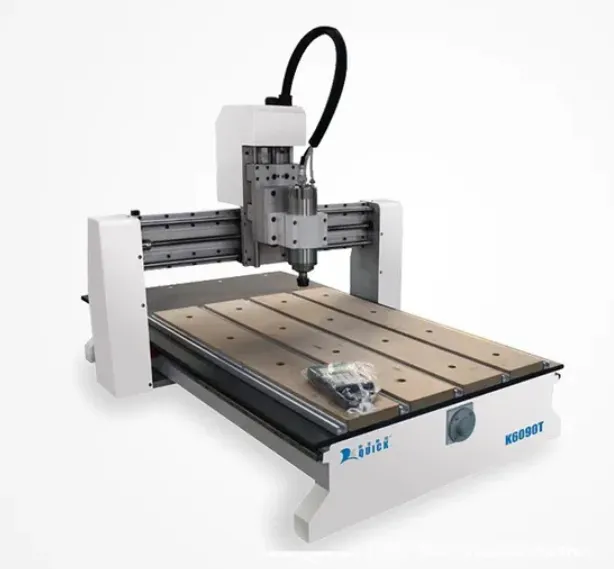 Material compatibility varies significantly across different home CNC machine categories. Entry-level machines primarily handle soft materials like woods, plastics, and foams, while more robust systems can machine aluminum, brass, and even steel with proper tooling and reduced cutting parameters. The cutting performance depends largely on frame stiffness – machines with supported linear rails and ball screw drives maintain better accuracy under load than those using unsupported rods and lead screws. Vibration damping becomes particularly important in home environments where machines may sit on workbenches rather than dedicated foundations, with some users employing isolation pads or sand-filled bases to improve cutting performance.
Material compatibility varies significantly across different home CNC machine categories. Entry-level machines primarily handle soft materials like woods, plastics, and foams, while more robust systems can machine aluminum, brass, and even steel with proper tooling and reduced cutting parameters. The cutting performance depends largely on frame stiffness – machines with supported linear rails and ball screw drives maintain better accuracy under load than those using unsupported rods and lead screws. Vibration damping becomes particularly important in home environments where machines may sit on workbenches rather than dedicated foundations, with some users employing isolation pads or sand-filled bases to improve cutting performance.
Control systems for home CNC machines have evolved dramatically with the proliferation of open-source solutions. Many units now run on GRBL-based controllers or modified versions of LinuxCNC, offering compatibility with standard G-code while providing user-friendly interfaces through software like Universal G-code Sender or ChiliPeppr. These systems typically connect via USB or Ethernet, with some advanced setups incorporating wireless control through Raspberry Pi intermediaries. The software ecosystem surrounding home CNC machines includes both free options like Fusion 360 for hobbyists and more specialized paid packages like Vectric’s Cut2D for woodworking applications. This accessibility has lowered the barrier to entry, allowing users with minimal machining experience to begin producing parts after basic training.
Workholding presents unique challenges in home CNC environments where space and budget constraints limit options. Many users develop customized solutions using T-track beds, modular vises, or vacuum plates adapted from commercial products. The prevalence of 3D printing in maker communities has led to creative fixture designs that can be printed on-demand for specific projects. Dust collection remains a critical consideration in home shops, with various DIY solutions ranging from simple shop vacuum hookups to elaborate cyclone separator systems helping maintain clean working environments and prevent machine damage from particulate buildup.
Electrical requirements for home CNC machines typically stay within standard household capabilities, with most units operating on 110V or 220V single-phase power. However, users often need to upgrade their workshop circuits to handle simultaneous operation of the CNC machine, dust collector, and auxiliary equipment. Noise levels represent another important factor for home use, with spindle sounds ranging from 65 dB for small DC brushless motors to over 85 dB for router-based systems – prompting many users to build sound-dampening enclosures or schedule machining sessions carefully.
The types of projects undertaken by home CNC users demonstrate the versatility of these machines. Common applications include woodworking (sign making, furniture components, decorative carvings), hobbyist prototyping (RC car parts, drone frames, scale models), and home improvement projects (custom hardware, architectural elements). The maker movement has particularly embraced CNC technology for creating intricate inlays, precision joinery, and artistic pieces that would be difficult or impossible to produce manually. Educational applications continue growing as well, with home CNC machines serving as practical teaching tools for STEM concepts ranging from geometric transformations to material science fundamentals.
Safety considerations take on heightened importance in home environments where professional safety infrastructure may be lacking. Essential precautions include installing emergency stop switches within easy reach, using appropriate personal protective equipment (safety glasses, hearing protection, dust masks), and implementing fail-safes like limit switches to prevent mechanical overtravel. Many home users add supplemental lighting systems to improve visibility of the cutting area and install fire suppression equipment like automatic extinguisher balls as precautionary measures. The closed-loop nature of home workshops also necessitates careful material selection, as machining certain composites or treated woods can release harmful fumes in confined spaces.
Maintenance requirements for home CNC machines differ from industrial equipment in both scale and frequency. Regular lubrication of linear guides and screws remains essential, though home users may opt for manual application rather than automated oiling systems. Belt tensioning on router-based spindles requires periodic attention, as does cleaning of electrical components susceptible to dust infiltration. Many home users develop customized maintenance checklists that account for their specific usage patterns and environmental conditions, with some incorporating IoT sensors to monitor machine health indicators like vibration levels and spindle temperature.
The market for home CNC machines has segmented into several distinct categories based on capability and price. Entry-level machines under $1,000 typically feature lightweight construction and limited material compatibility, while mid-range systems ($1,500-$5,000) offer improved rigidity and expanded work areas. High-end home machines ($5,000-$15,000) begin blurring the line with professional equipment, incorporating features like automatic tool changers, enclosure systems, and advanced control software. This stratification allows users to select machines appropriate for their anticipated usage while providing upgrade paths as skills and requirements evolve.
Technical support and community resources play vital roles in the home CNC ecosystem. Online forums, YouTube channels, and maker collectives have become invaluable sources of troubleshooting advice, project inspiration, and technique refinement. Many machine manufacturers now offer extensive video libraries and knowledge bases to help users overcome common challenges, while third-party developers create specialized accessories and upgrades to enhance machine capabilities. This collaborative environment helps compensate for the lack of formal training opportunities available to most home users.
Future developments in home CNC technology appear likely to focus on increased automation and connectivity. Early signs include machine vision systems for simplified workpiece alignment, cloud-based toolpath optimization, and integration with other digital fabrication tools like 3D scanners. The growing availability of affordable high-speed spindles and improved cutting tool materials continues pushing the boundaries of what home machines can accomplish. As the technology matures, we may see greater standardization of components and interfaces, making it easier for users to customize and upgrade their systems over time.
The economic considerations of home CNC ownership extend beyond the initial machine purchase. Tooling costs can accumulate quickly, with quality end mills ranging from $10-$100 each and specialty bits costing even more. Workholding accessories, measurement tools, and software subscriptions represent additional ongoing expenses. Many home users find that material waste from learning curves and test cuts adds significantly to project costs initially, though efficiency typically improves with experience. Some enthusiasts offset expenses by taking on small commission jobs or producing marketable products, while others view the investment purely in terms of hobby enjoyment and skill development.
Comparative analysis with alternative fabrication methods highlights the unique value proposition of home CNC machines. While 3D printers excel at producing complex geometries in plastics, CNC machines provide superior strength and surface finish in engineering materials. Compared to manual machining, CNC offers repeatability and precision that would require exceptional skill to achieve consistently by hand. The ability to work with sheet materials gives CNC an advantage over lathe-based processes for many types of projects. This complementary relationship with other tools makes CNC a centerpiece of many well-equipped home workshops.
The learning curve associated with home CNC operation encompasses multiple disciplines. Users must develop competence in CAD modeling, CAM programming, machine operation, and material science fundamentals. Many find the process iterative, beginning with simple 2D cuts in soft materials before progressing to complex 3D machining in metals. The hands-on nature of troubleshooting and process optimization provides practical engineering experience that often transfers to other technical pursuits. Patient, systematic approaches tend to yield better results than attempts to immediately tackle ambitious projects without proper foundational skills.
Environmental factors influence home CNC operation in ways that differ from industrial settings. Temperature fluctuations in garages or sheds can affect machine geometry and material behavior. Dust management becomes particularly important in shared domestic spaces. Power quality issues like voltage drops may cause unexpected machine behavior in residential electrical systems. Savvy home users learn to adapt their workflows to account for these variables, sometimes implementing environmental monitoring systems to track conditions during extended machining sessions.
The social dimension of home CNC ownership has grown alongside the technology’s popularity. Local maker spaces often serve as hubs for knowledge exchange, while online communities facilitate global collaboration on projects and techniques. This network effect accelerates skill development and inspires innovation, as users build upon each other’s discoveries. Competitive events like CNC challenges and maker fairs provide motivation for pushing creative and technical boundaries. The culture emphasizes open sharing of designs and methods, contrasting with proprietary approaches common in industrial settings.
Customization and modification represent hallmarks of the home CNC experience. Many users personalize their machines with upgraded components, from aftermarket spindle mounts to enhanced control panels. The open architecture of common control systems allows for extensive tuning of machine parameters to optimize performance for specific applications. Some enthusiasts completely retrofit older machines with modern electronics, breathing new life into otherwise obsolete equipment. This tinkering mentality aligns with the broader maker ethos of understanding and improving one’s tools.
Project planning and workflow management take on particular importance in home environments where time and resources may be limited. Effective users develop systems for organizing tooling, materials, and project files to maximize productive machining time. Many adopt digital project management tools to track progress across multiple iterations of a design. The ability to simulate cuts virtually before running actual machine code helps prevent costly errors and material waste. These organizational skills often prove as valuable as technical machining abilities for successful home CNC operation.
The relationship between home CNC machines and traditional craftsmanship continues evolving in interesting ways. While some view CNC as replacing hand skills, many practitioners find it instead expands their creative possibilities. The technology enables precise execution of designs that would be impractical to create manually, while still requiring artistic vision and problem-solving skills. Hybrid approaches that combine CNC precision with hand finishing techniques are becoming increasingly common, allowing makers to leverage the strengths of both methods. This synthesis represents an exciting direction for home fabrication, blending digital precision with human craftsmanship.


